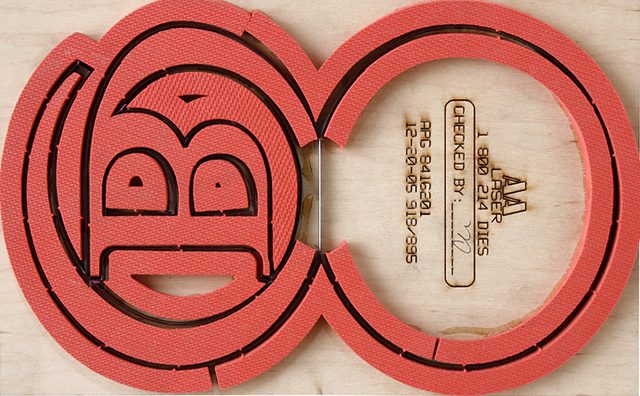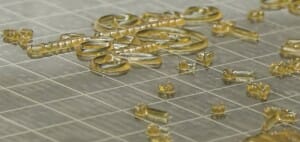Letterpress printing has made a tremendous comeback and the ease of photopolymer plates is a big part of this comeback. We manufacture copper, magnesium, photopolymer and wood printing plates. Photopolymers are by far the most popular.
The two most popular photopolymer products are KF-95 and KF-152. These are filmed based products that have a transparent and flexible base. The 95 represents .95mm or .037’’ in total thickness. The 152 is deep relief and represents 1.52 mm or .060’’ in total thickness. By subtracting these numbers from type high or .918’’ and the thickness of your type, you set the height of your base plate. .881’’ for KF-95 and .58’’ for KF-152.
A base plate for deep relief or KF-152 is a very versatile plate. It not only allows you to mount KF-152 but also any 16 gauge (.063’’) metal such as copper and magnesium. Copper is by far the premium choice for printing or foil stamping. It is due to the hardness of the metal. Because it is very hard, it can be etched with virtually no shoulders on the image. This allows for clean transfer of foil or ink with no plugging, or ink pink up on the bevels. Copper can also be hit very hard to give maximum debossing of the stock. Photopolymers must have a bevel because it is not as hard and small type and strokes will not hold up.
Cost is a major consideration in choosing plate material. The most common minimum plate charge is $30. You can get up to 48 sq inches of KF-95 or 45 sq inches of KF-152. Up to 30 square inches photopolymer or copper is the exact same cost, $30. If you have the base plate, the cost is the same and the material is superior why not choose copper.

